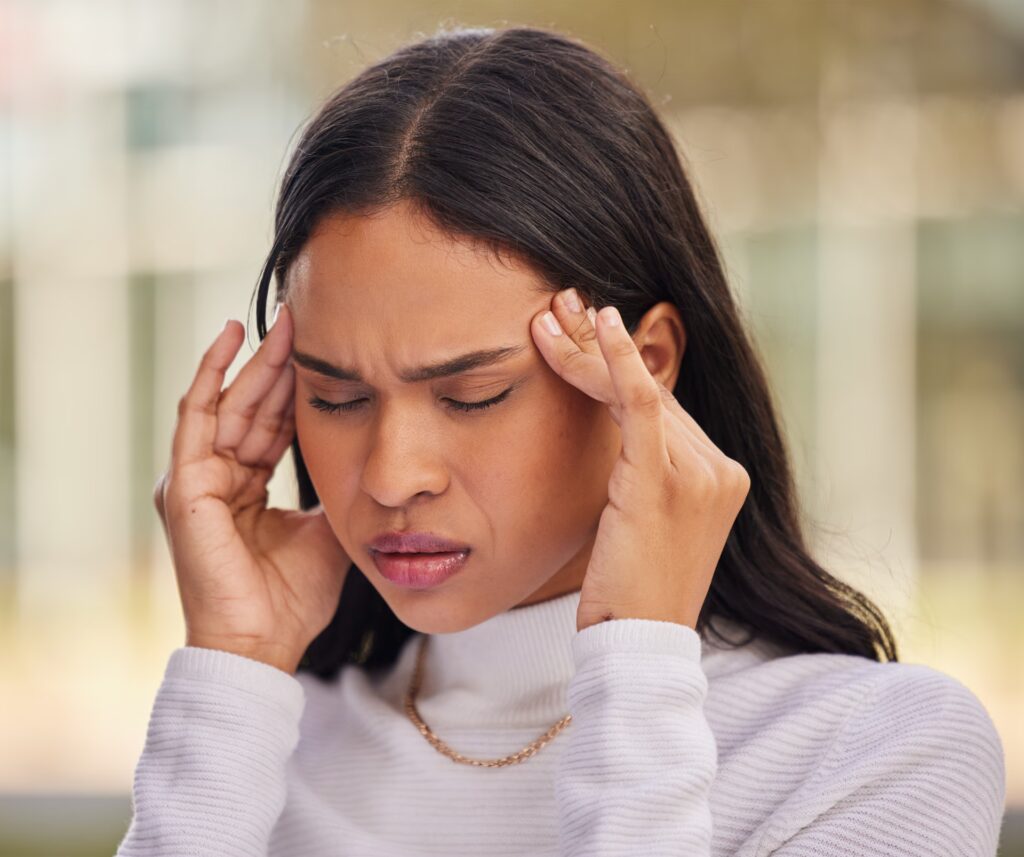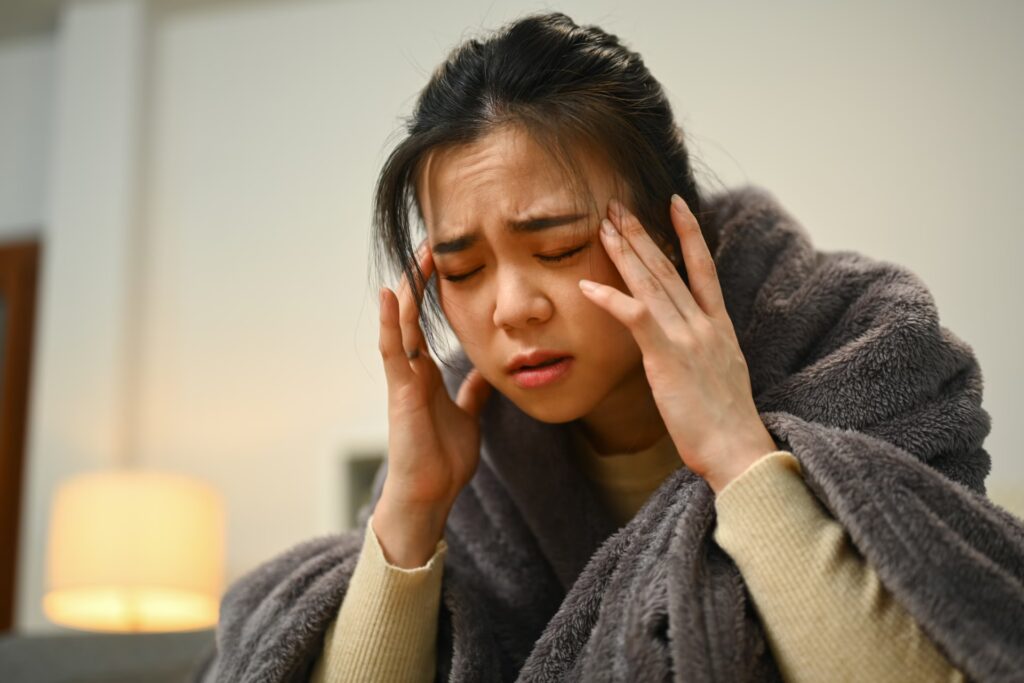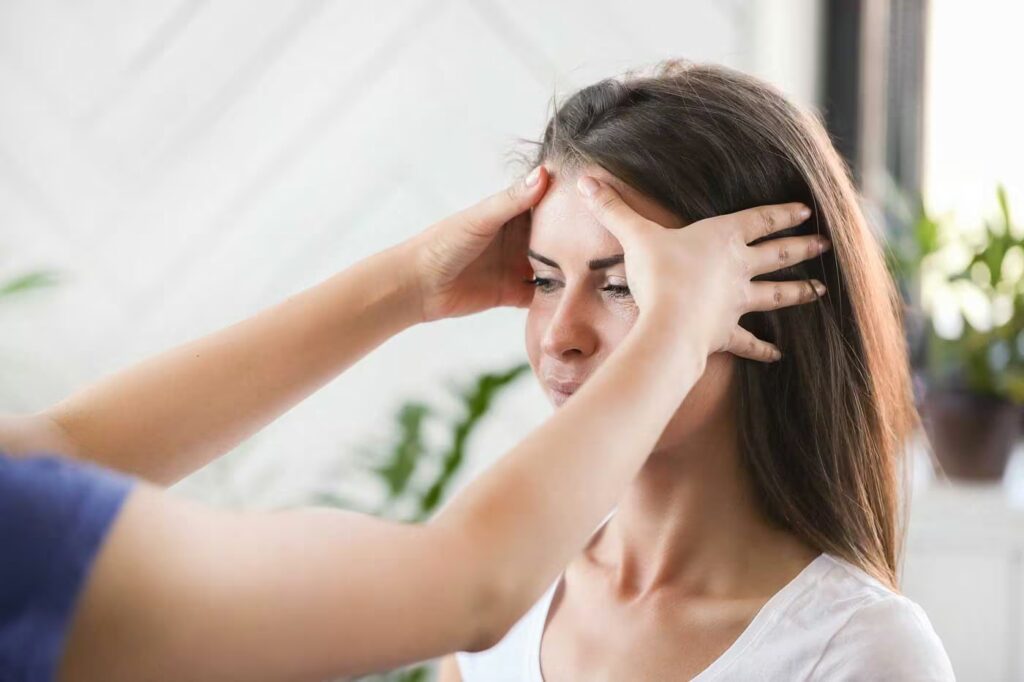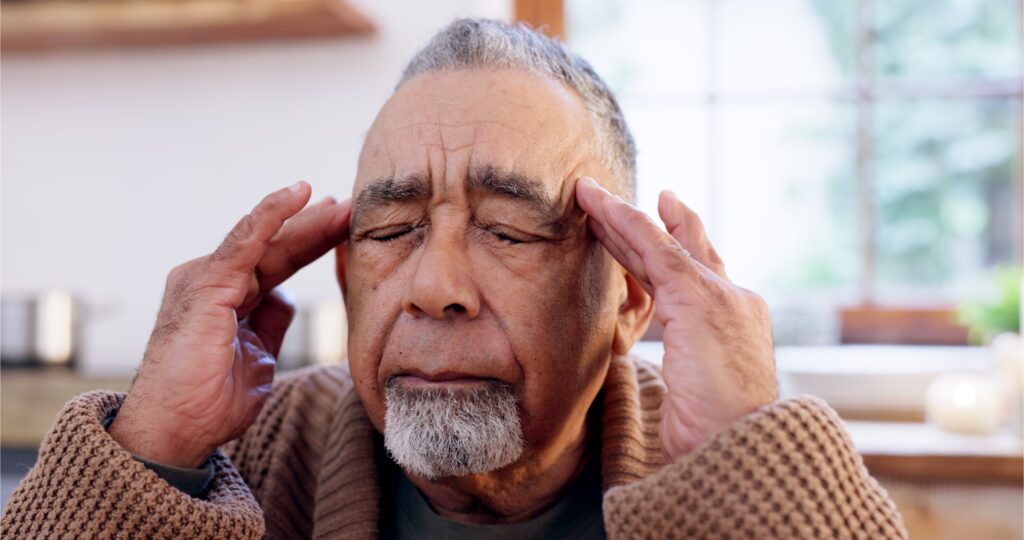
Expert Care for
Headaches & Migraines
Headaches are a common condition that everybody will suffer with in some form in their lives, with pain in the head and/ or face. There are several types of headaches and treatment and management varies depending on the type of headache, potential causes and symptoms that develop.
Some of the most common that we treat are:
Tension headaches
Common type of headache that often recur and typically last around 30 minutes. They are categorised based on the frequency of attacks into three groups: infrequent, with fewer than 12 episodes per year; frequent, with fewer than 15 episodes per month; and chronic, with more than 15 episodes per month. Common triggers for tension headaches include stress, poor sleep, and caffeine consumption.
For a headache to be classified as a tension headache, it must have at least two of the following features: pain on both sides of the head, a sensation like a tight band around the head, mild to moderate intensity, and not being aggravated by routine physical activity.

Cluster Headaches
Cluster headaches are a rare but extremely painful type of headache that usually affect one side of the head, often around the eye. While the exact cause is unclear, they are thought to involve the hypothalamus and trigeminal nerve, and they often occur in cyclical patterns (or “clusters”) over weeks or months, followed by remission periods.
Symptoms of Cluster Headaches
- Intense, sharp or burning pain (often around one eye)
- Redness, watering of the eye
- Nasal congestion or runny nose on the same side
- Restlessness or agitation during attacks
- Typically last 15–180 minutes and may occur multiple times per day

Migraines
Migraines are a neurological disorder characterized by recurrent, intense headaches, often accompanied by other symptoms like nausea, visual disturbances, and sensitivity to light or sound. They are more than just “bad headaches” and can significantly impact daily life.
Migraine symptoms typically progress through four stages, though not everyone experiences all of them:
Prodrome (Early Warning Signs – hours to days before)
- Fatigue
- Food cravings
- Mood changes
- Neck stiffness
- Increased urination
Aura (in ~25% of cases)
- Visual disturbances (flashing lights, zigzag lines, blind spots)
- Sensory changes (numbness, tingling)
- Speech or language issues
- Usually lasts 20–60 minutes
Headache (Attack Phase)
- Throbbing or pulsating pain (usually one-sided, but can be both)
- Moderate to severe intensity
- Nausea and vomiting
- Sensitivity to light (photophobia), sound (phonophobia), or smell
- Lasts 4 to 72 hours without treatment
Postdrome (After the Attack)
- Fatigue, brain fog
- Mood changes
- Muscle soreness
The type of migraine and what triggers them differs from person to person and a personalised treatment plan is essential to manage the symptoms effectively.
Effective management of migraines and headaches often begins with simple but important lifestyle modifications. Reducing or cutting down on caffeinated drinks can help decrease the frequency and severity of headaches. Increasing physical activity is also beneficial, with a recommended goal of at least 150 minutes of moderate exercise per week, which can improve overall well-being and reduce stress levels. Additionally, learning to recognise and avoid people or situations that trigger excessive stress plays a crucial role in preventing migraines and headaches. Together, these changes can significantly improve quality of life and help keep headaches under control If a person falls into the frequent or chronic category of migraines and headaches, a course of acupuncture may be considered as an option for pain relief.

Vertigo
Unlike conditions like osteoarthritis, sciatica and muscle strains; vertigo is a symptom not a condition, similar to how joint stiffness is a symptom of osteoarthritis. An episode of vertigo feels as if you and your surroundings are spinning, and it can be severe enough to affect your balance. Although vertigo affects a person’s balance, it is caused by conditions related to inner ear problems such as: benign paroxysmal positional vertigo labyrinthitis, vestibular neuritis, and Meniere’s disease. However, even something as common as a migraine can also trigger vertigo.
Vertigo is often confused with general dizziness, but there are key differences between the two. To help distinguish them, healthcare professionals ask about specific symptoms, particularly the timing and triggers. For example, recurrent symptoms that occur in specific situations, such as when turning your head in bed, are more characteristic of vertigo rather than general dizziness.
Although time is often the best remedy for vertigo, there are certain things that should be avoided, as well as specific actions that can help manage symptoms and support recovery. For instance, lying in a quiet, dark room can help reduce the spinning sensation. Sleeping with the head slightly elevated, using two pillows, may also provide relief. While it’s important to stay active, movements—especially those involving the head—should be done slowly and carefully. Stretching the neck or making sudden head motions can actually worsen vertigo.

